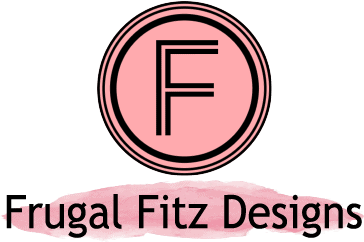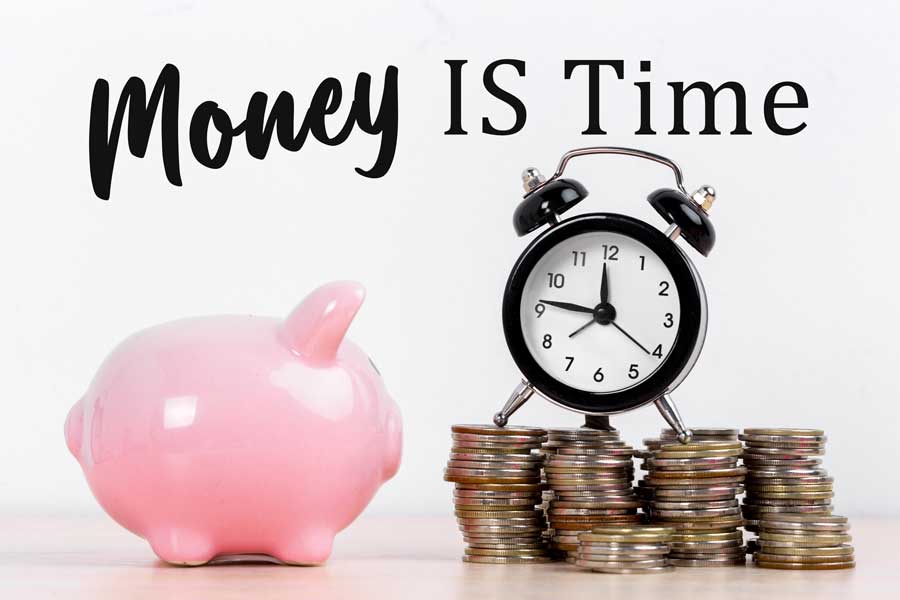Saving money comes down to adjusting our habits and behaviors. The best thing you can do to save money, is usually not to make more, but use less. Here are the 2 mental tricks that I use, to convince myself to keep my money in my wallet and not spend it!
Money Is Time
Time Is Money
We all know the expression that “time is money”. Generally, this is meant to get us to work faster and harder so we can earn more. While working more efficiently is definitely a good idea, if we flip this around we can use it for saving money, not just making it.
Have you ever thought about how much something actually costs?
I am not talking about the dollar signs on the price tag, but what it is actually costing you. What are you giving up to buy this thing, whatever this thing might be.
You might think, I am paying $6.00 for a iced latte, and it is normal to think of things in those terms.
However, if we think in terms of time we will start to see things differently. This iced latte may be costing you 10 minutes, 20 minutes, or 30 minutes of your time.
How is that? if you make $36.00 an hour, it will take 10 minutes for you to make $6.00. If you make $12.00 an hour, it will take you 30 minutes. That is also not factoring in taxes, which reduces that actual cash you receive to spend.
You can start to see that the cost of things also starts to become deeply unique to your personal situation. A high paid lawyer might not think twice about the purchase of an iced latte, but someone that is working for $12.00 an hour gave up a whole lunch break worth of time for a coffee.
What about big purchases?
The bigger the purchase, or when you aggregate purchases, the more dramatic the amounts of time become.
Lets say you buy a 104 coffees a year, that’s 2 a week. You will have spent $624.00 in a year on iced lattes. If you make $20.00 an hour you will have spent about 31 hours of work time, or 4 days, to support your latte habit.
What if you are looking at purchasing a new car? You would be find driving the used car that is $15,000 (include financing costs), but you really want the new one that cost $40,000. The difference is $25,000 between the 2 options. Making $20.00 an hour, the amount of extra time you will have to give up for that car is 1,250 hours. That is about 156 days of work, or 31 work weeks.
That’s a lot of time you could use on family, experiences, and enjoying life.

Putting “Money Is Time” Into Practice
Think in terms of time! We all value our time, it is the only thing we can’t get more of. Think about all the things you want to do, and then think about being stuck behind a desk for 8 hours a day. Which would you rather do? It is a no brainer. The power of this technique comes from realizing that your money represents time!
It is a habit that will take some time to form, but soon you will find yourself making better choices. You will go to buy some knick-knack, do a quick mental calculation, and realize that you are giving up 2 hours, 3 hours, 4 hours of your time for this. You will then put it down and walk away.
Personal Price Anchoring

Traditional Price Anchoring
Price Anchoring is typically used as a sales and negotiating tactic. A sales person will throw out a price that is high, so that when they walk it back you feel like you are getting a deal.
An Example is a car salesman that has a car listed for $20,000, the absolute lowest price they are willing to accept is $15,000. They let you talk them down, after pointing out all the flaws and dings, and you walk away with the car for $17,000. You feel like you got a deal because you “talked” him down $3,000, but really you could have gotten an even better deal. The price anchor worked, you feel like you got a deal and they made an extra $2,000.
Another example is when you go to a website that sells clothing, you notice that every item they sell has a regular price that is crossed out and then the price you pay. While they are ineffectively utilizing price anchors. Because every item can’t be on sale all the time and you are going to eventually catch on. That is exactly what they are trying to do. They are trying to anchor a price in your mind, so the price you are paying seems relatively cheap.
Personal Price Anchoring
Personal Price Anchoring is when you use this cognitive bias to your advantage to save more money. You do this by knowing your prices, especially of the things that you purchase all the time. You can apply this to big purchases as well doing research before you buy.
In the example of the car above you would have done research before stepping in the dealership, or you would have left the dealership before purchasing to do research and reset your mental price.
The real power of this technique is going to come from the hundreds of smaller transactions you are going to have throughout year. Take your $6.00 iced latte, maybe there is another coffee shop near you that sells a great iced latte for $4.00. What you do is anchor that price in your mind, “I can get a great iced coffee for $4.00”. Suddenly the $6.00 coffee feels like you are over paying, and no one like to overpay for something.
How I use Price Anchoring
I have prices anchored for everything I buy on a regular basis. The most common place I use anchor prices is at the grocery store. I typically frequent 4 different stores. A local grocery store, a fancier grocery store, Walmart, and Costco. I know what products to look for at each one of these stores, who does what best, and what they compete against each other on.
My local grocery is great for most things, often here I am just waiting for sales for certain items. I know these items go frequently on sale, so I wait until they do to pick them up. An example of something I buy here is ground beef for $3.50 a pound, if it goes up to $4.50, I am not buying because I know it will be back down next week.
The fancier grocery store I generally only use for the deli & bakery. They have better quality for the stuff they make in house. They also run sales on meat and that will beat the other grocery store from time to time. Generally though anything in the center of the store, that you can pick up anywhere, you are going to pay more for. An example of what I get here is fresh baked bread $3.00 (made with only 3 ingredients), I am willing to pay more in this case for the quality.
Walmart is the closest store to me so it is very convenient. Still, I mostly only get things that are packaged here, along with non grocery items like storage containers. An example of what I get here is sour cream, $4.50 for a 3 pound tub.
Costco is an interesting one because I only really go here once a month. It also feels like it is easy to fall into the trap of buying in bulk. Where either you don’t use the food in time, or you feel like you’re getting a deal because you are buying so much, but in actuality you’re paying the same price or even more. An example of what I get here is zip lock bags, mixed nuts, and frozen food like pot stickers.

Putting Price Anchors Into Practice
Pay attention to prices, and know how much you should expect to pay for something. You should start noticing what you are getting for your money, and ask yourself is there a better alternative?
This doesn’t mean you always need to go with the cheapest option, many times it is worth the money to pay more for something because the quality is that much better. However, keep in mind that often it isn’t the case and you are paying more for a brand or convenience.
Final example, you are at an event like a baseball game and they are selling some gas station nachos for $10.00. Now, you might really want those nachos, and it might be worth it for you to get them, but if you can wait 2 hours you can get the same thing for $3.00.

